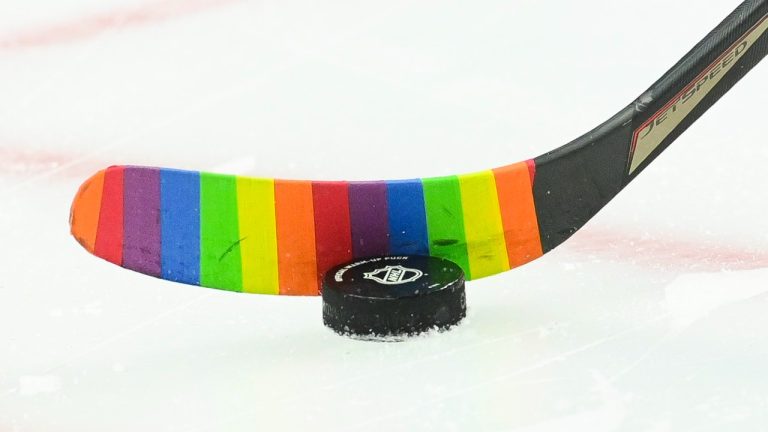Since the NHL decided to disallow Pride symbols of any kind during warmups and games, the organization that makes Pride hockey tape in support of the 2SLGBTQ+ community has been inundated with calls from people who want their rainbow tape.
And that includes “a number of NHL players,” says Pride Tape’s co-founder, Dr. Kristopher Wells.
“I would not be surprised at all if you saw an NHL player use Pride Tape, regardless of what the NHL said,” adds Wells, the Canada Research Chair for the Public Understanding of Sexual & Gender Minority Youth at Edmonton’s MacEwan University. “I think the players will find a way to make their own statements.
“We’ve had people from across the hockey world contact us and express their disappointment with this decision. But they remain undeterred that they’re going to continue to find ways to show their support.”
Wells won’t say who has reached out, but that could become clear and bright as a rainbow as the NHL opens its 2023-24 season this week, and later in the fall as other pro and junior leagues start.
Though the NHL will no longer allow the tape during games and practices, Pride Tape is still absolutely massive. The not-for-profit grassroots collective started nearly a decade ago, and it’s now active and available in more than 40 countries.
And here’s the thing: It’s hockey that really got Pride Tape going.
That was back in 2016, when the Edmonton Oilers, led by then-captain Andrew Ference, first used the tape. It has since been used by every NHL team, and as Wells points out, “it was always optional.
“We started with hockey, because hockey is part of Edmonton’s DNA and it’s in our backyard,” says Wells, who calls the city home. “We’re a hockey town, right? And people listen to the hockey team. It was really important to have the Edmonton Oilers showing support for the LGBTQ+ community, which they’ve been doing for over a decade. And that support only continues to increase every year.”
Wells doesn’t expect NHL teams to stop Pride nights, and also he points to the second annual Pride Cup, which the Oilers hosted this summer, a battle of Alberta between LGBTQ+ teams from Edmonton and Calgary.
“To us, success was never about the NHL — the NHL brings a certain visibility,” he says. The tape instead was “always about the community.”
Pride Tape was created in response to statistics that showed young gay and bisexual men and boys were dropping out of organized team sports like hockey at early ages, because of the culture of homophobia. “We didn’t have any out current or retired NHL players, so we knew there was a significant problem with hockey culture, where the sport was not seen as inclusive or safe or accepting,” Wells says.
Any positive steps in that safe or accepting direction taken by the NHL over the years, he adds, have now been erased with the decision to disallow Pride tape and jerseys.
“I think the NHL is sending the wrong message, and taking a step backwards. It says it’s doing this to prevent controversy, but in fact, what it’s done is ignite controversy where there doesn’t need to be any. This kind of decision just undermines the important work the league has been doing.
“Unfortunately, we’re at a time in the world where the LGBTQ community continues to be under attack,” Wells continues. “We see hate crimes increasing, and so it’s all the more important that we have visible allies who don’t back down in times of confrontation — they double down and show their support.”
What Wells worries about most is the kids playing hockey, or wanting to get into the game.
“At the end of the day, what we really think about the most is that young player who’s thinking, ‘I thought the game was welcoming, but I guess it’s not. Is there really a place here for me in the game that I love?’” he says.
His hope is that players and teams make sure those kids feel safe and included, despite the NHL’s decision.
“I think this will hopefully send that message to teams and players that they need to do more,” he says. “If the league is not going to stand in support, well that leaves it up to the teams and the players to get out in the community and engage and help to create these safe spaces.”
The phone calls and orders for Pride Tape continue, and only time will tell whether NHL players will continue to sport the rainbow tape, against the NHL’s wishes.







